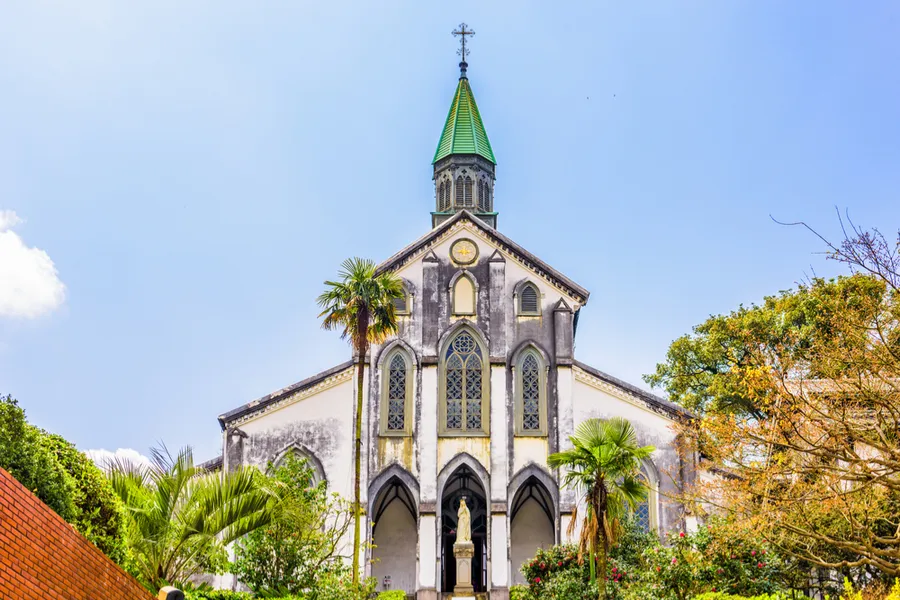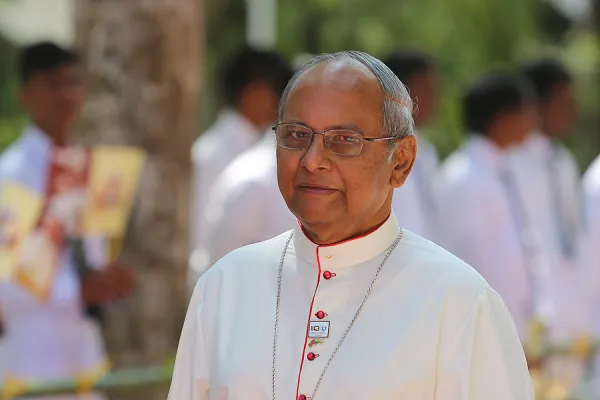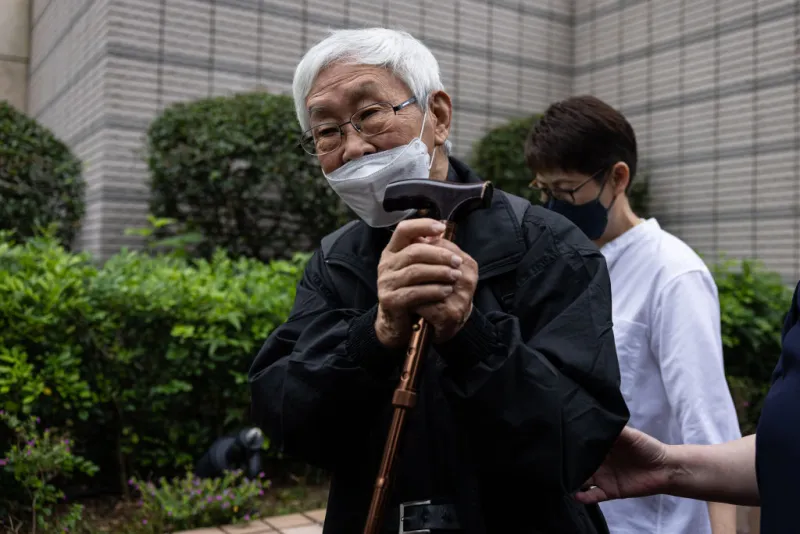
Nagasaki, Japan, Jul 3, 2018 / 02:42 am (CNA/EWTN News).- Places of major importance for Japanese Christianity, including the Nagasaki basilica commemorating 26 Catholic martyrs, have been selected as UNESCO World Heritage sites.
“These sites bear unique testimony to a cultural tradition nurtured by hidden Christians in the Nagasaki region who secretly transmitted their faith during the period of prohibition from the 17th to the 19th century,” said the June 30 announcement from the U.N. Educational, Scientific and Cultural Organization.
“Together they reflect the earliest activities of Christian missionaries and settlers in Japan – the phase of encounter, followed by times of prohibition and persecution of the Christian faith and the final phase of the revitalization of Christian communities after the lifting of prohibition in 1873.”
All the sites are in the northwest part of the Japanese island of Kyushu.
Nagasaki’s Basilica of the Twenty-Six Holy Martyrs of Japan, also known as Oura Church, commemorates the 20 Japanese and six foreign-born Christians martyred for their faith in 1597 after Japanese leaders became increasingly suspicious of missionaries.
In a March 2015 ad limina visit with Japan’s Catholic bishops, Pope Francis reflected on these missionaries and the martyrs of early Japan.
“The embers of faith which the Holy Spirit ignited through the preaching of these evangelizers and sustained by the witness of the martyrs were kept safe,” Pope Francis said, “through the care of the lay faithful who maintained the Catholic community’s life of prayer and catechesis in the midst of great danger and persecution.”
Among the martyrs of 1597 were seminarian Saint Paul Miki and his companions.
Sentenced to die by crucifixion and lancing, they were first marched 600 miles to the city of Nagasaki. During the journey, they underwent public torture meant to terrorize other Japanese believers in Christ.
All 26 held out courageously, even singing the hymn of praise “Te Deum” when they arrived at the hill where they would be crucified.
St. Francis Xavier had brought Christianity to Japan in 1549, and he and other missionaries found significant receptivity to the Gospel. However, the massive persecution just decades later prompted many Japanese Christians to go into hiding for centuries.
Oura Church was built by French priests in 1864 in the Gothic style. It is the oldest Christian-related building in Japan, Agence France Presse says.
The cathedral is the site where, in 1865, nervous Japanese peasants approached a French priest. One woman told him “our hearts are the same as yours.” Soon the rest of the world learned that thousands of Japanese had secretly lived as Christians for centuries.
Oura Church was designated a national treasure by the Japanese government in 1933. It was damaged in the Aug. 9, 1945 atomic bombing of Nagasaki by U.S. forces.
Hara Castle is also selected for the UNESCO list. It is the location of the final stand of the Shimabara rebellion. The rebels were predominantly Japanese Catholics, while the besieging forces were Japanese forces of the Tokugawa shogunate, which had the support of Dutch Protestant allies. The castle fell in 1638, with the building razed and burned. Thousands of rebels were punished with crucifixion.
After the rebellion was suppressed, the ban on Christianity became even more strictly enforced.
The UNESCO World Heritage list will include 10 Christian villages including Sakitsu village in Amakusa, in the southwestern part of the city of Kumamoto. Many Christians practiced their faith in secret there.
In January 2017 the Japanese government said it would submit sites related to Christian persecution for consideration for the UNESCO World Heritage list. Sites’ inclusion on the list requires being “of outstanding universal value” and must meet other criteria set by UNESCO.
If you value the news and views Catholic World Report provides, please consider donating to support our efforts. Your contribution will help us continue to make CWR available to all readers worldwide for free, without a subscription. Thank you for your generosity!
Click here for more information on donating to CWR. Click here to sign up for our newsletter.





Catholics need to read actual history in this area…as in encyclopedias. Catholic Spain conquering by sword the Phillipines by expeditions in the second half of the 16th century just south of Japan would in fact impress the Japanese that Catholicism was partly of this world in contradistinction to Christ saying… “ if my kingdom were of this world, my followers would fight”. From 1613 to 1620, Hasekura conducted a diplomatic trip to Europe, to Spain and the Vatican et al. Combine this with the invasion of the Phillipines by Spain with Japanese Catholics taking up arms in the rebellion and one can see that this was not a case of Japan being confronted with weaponless Amish as it considered the historical reality of Catholicism at that time in history. To Japan, Catholicism was a mix of religion and well armed invaders.
We are far from that NOW….we were that at that time if you were conquerable.